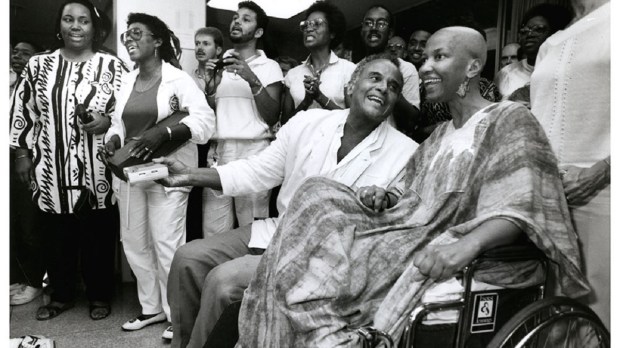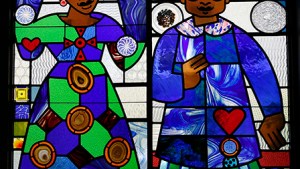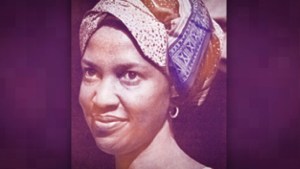Lenten Campaign 2025
This content is free of charge, as are all our articles.
Support us with a donation that is tax-deductible and enable us to continue to reach millions of readers.
Many are remembering how Harry Belafonte, who died April 25 in New York at age 96, was so inspired by the life ministry of Sister Thea Bowman that he had planned to make a film about her.
According to an April 25 posting on the website of The Catholic University of America in Washington, Belafonte first contacted Sister Bowman after he saw a profile of her on 60 Minutes on CBS in 1987.
The religious sister, a noted educator and dynamic evangelist, had persuaded the TV news magazine’s lead reporter, Mike Wallace, to say, “Black is beautiful” during the primetime story on her ministry, said the university’s posting.
“Belafonte watched the broadcast and knew he wanted to bring her witness to hope and healing to wider audiences,” Catholic University said. “Belafonte contacted Sister Bowman to discuss his idea of a feature film about her life starring Whoopi Goldberg, both of whom she met during a visit to California.”
They first met in 1988. At the time, Belafonte was “a Hollywood icon who was widely respected for his social justice activism, so Sister Bowman trusted that he would do her life’s work justice,” Catholic University said, adding that Belafonte “went to great lengths to get personally involved in bringing her story to the big screen.”
According to the university, the Franciscan Sister of Perpetual Adoration, who was battling the cancer that would claim her life on March 30, 1990, invited Belafonte to her home in Canton, Mississippi, and to Xavier University of Louisiana’s Institute for Black Catholic Studies, of which she was founding member, in New Orleans.
Belafonte visited both places “to speak with Sister Bowman’s friends and students to learn about her impact on their lives,” Catholic University said. “Even though she was using a wheelchair due to a battle with cancer that took her life less than two years later, he saw that nothing kept her down. They became practically inseparable, and Belafonte was seen pushing her along in her wheelchair.”
When Sister Bowman’s “condition worsened,” Belafonte “traveled to visit her at her bedside,” the university added. But the film was never made. The actor-activist’s rights expired after the project was delayed because he and her Franciscan community had different opinions on who should “have final editorial control over her portrayal” — him or her community, the university said.
Some years later, a documentary on her life and ministry was written and produced by Franciscan Sister Judith Ann Zielinski. The film was released in 2022. Sister Bowman today is a candidate for sainthood along with five other prominent Black Catholics in the U.S.
Belafonte died at his home on the Upper West Side of Manhattan. The cause was congestive heart failure, according to his longtime spokesman, Ken Sunshine.
Born Harold George Bellanfanti Jr. on March 1, 1927, at Lying-in Hospital in New York’s Harlem neighborhood, he was the son of immigrants from the Caribbean islands of Martinique and Jamaica. His father worked as a chef and his mother was a housekeeper.
Harry Jr. was baptized a Catholic and raised in the faith. He attended parochial school at St. Charles Borromeo in Harlem. He grew up in poverty, but spent much of his childhood living with his grandmother in Jamaica. After high school graduation, he joined the U.S. Navy and served during World War II.
He returned to New York after the war, enrolled in drama school and began performing. Belafonte first achieved fame in the 1950s with film and musical theater roles.
“Harry Belafonte was not the first Black entertainer to transcend racial boundaries, but none had made as much of a splash as he did,” The New York Times said in an April 25 obituary.
Belafonte is one of the few performers to have received an Emmy, Grammy, Oscar and Tony (EGOT). He won the Oscar in a noncompetitive category — in 2014, the Academy of Motion Picture Arts and Sciences presented him with the Jean Hersholt Humanitarian Award. He earned his career breakthrough with the album Calypso (1956), which was the first million-selling LP record by a single artist.
Belafonte was best known for his recordings of “Day-O (The Banana Boat Song),” “Jump in the Line (Shake, Senora),” “Jamaica Farewell” and “Mary’s Boy Child.” He recorded and performed in many genres, including blues, folk, gospel, show tunes and American standards. He also starred in films such as Carmen Jones (1954), Island in the Sun (1957), Odds Against Tomorrow (1959), Buck and the Preacher (1972) and Uptown Saturday Night (1974). He made his final screen appearance in Spike Lee’s BlacKkKlansman (2018).
Belafonte was a close confidant of the Rev. Dr. Martin Luther King Jr. during the Civil Rights Movement of the 1950s and 1960s. He also helped organize the March on Washington in 1963.



